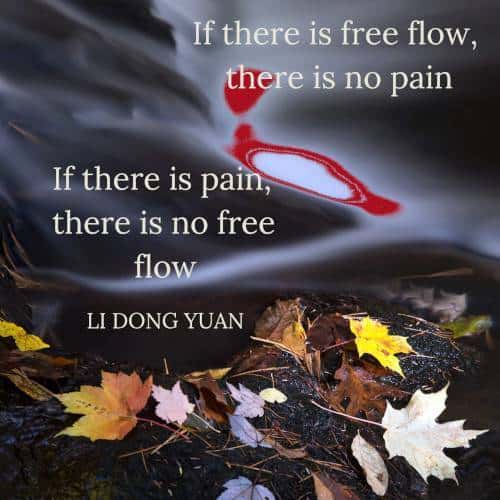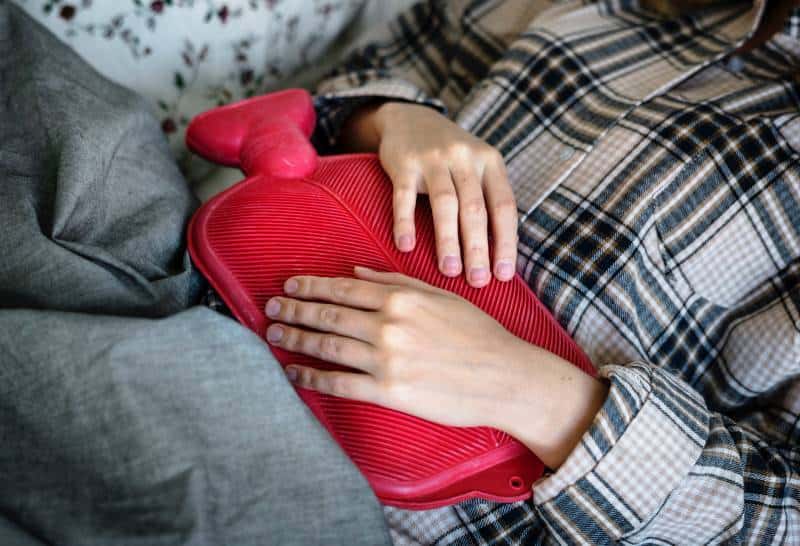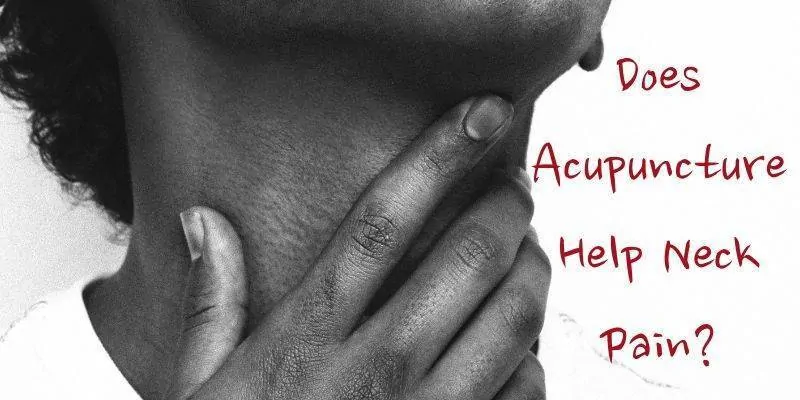Many people seek help from a practitioner of acupuncture for pain relief. The presence of pain causes distress and interferes with the ability to perform the activities we desire.
According to Pain Australia, chronic pain affects the physical health of 20% of Australia’s population. An estimated 80% of sufferers not receiving adequate treatment. Pain may be solely physical but there is often emotional pain as well.
The economic cost of pain is estimated at around $34billion. This includes lost productivity, lost income and the direct cost of healthcare.
Chinese medicine categorises many different qualities of pain. This helps to determine specific treatments to resolve underlying disharmonies.
What is Pain?
Pain is a signal of disorder in the body, it is a warning light to arouse our attention.
Our interpretation of pain signals is a result of conditioning. Throughout our life, we learn which pain is ‘normal’ and which requires our attention. We understand the difference between hunger pain or menstrual cramps and abdominal pain requiring medical attention.
Pain can be defined as follows
An unpleasant sensory and emotional experience associated with actual or potential tissue damage, or described in terms of such damage
International Association for Study of Pain
Pain is a subjective experience, and though we may be able to empathise, we cannot truly feel the pain of another. Pain can also be described as
Pain is whatever the experiencing person says it is, existing whenever he says it does
Margo McCaffery
Chinese medicine has a very simple way of understanding why pain arises.

This concept means that where there is an obstruction to the free flow of Qi and Blood, pain occurs. This obstruction may be physical, leading to physical pain. These obstructions may also include emotional and thought patterns, which can lead to mental and emotional pain.
When we use acupuncture for pain in clinical practice, we aim to improve the circulation of Qi and Blood. By doing this we can move obstructions to reduce pain. We also circulate healthy nutrition to nourish deficient areas and promote healing.
Pain classification in Western medicine
Pain is commonly classified according to its duration and its cause.
The first consideration is whether the pain is acute or chronic. Acute pain has been present for a short time and relates to temporary or recent disease. Chronic pain accompanies chronic diseases and is pain lasting for over 3-6 months.
The second consideration is whether the pain is somatogenic or psychogenic. Somatogenic pain arises from a disturbance of the physical body. This is due to the activation of sensory neurons. This may also occur due to damage or malfunction of the nervous system.
Psychogenic pain arises from the mind. This is often attributed as the cause when diagnostic testing reveals no physical cause. This diagnosis of ‘it is all in your mind’ however offers little in the way of comfort or relief for those suffering. This burden on the sufferer leaves them feeling misunderstood and isolated. This can further increase the mental health pain suffered.
Pain classification in Chinese medicine
When planning treatment with traditional acupuncture for pain, the nature and time of onset of pain are important. This allows for an understanding of the specific causative factors.
When looking at the nature of pain there may be:
- Dull aching pain – the pain is more of general soreness in a broader area.
- It is often not as intense but may be present for a while.
- This is due to a deficiency of Qi and/or Blood which creates a lack of movement.
- Distending pain – the pain is a more severe type of ache, accompanied by distension or bloating.
- This is due to a stagnation of Qi which blocks movement.
- Sharp intense pain – the pain is often more acute and is pinpointed easily.
- This is due to the stasis of the Blood which prevents movement.
- Heavy pain – the pain is like an ache with a sense of heaviness.
- This is due to the presence of dampness or phlegm which obstructs movement.
- Burning pain – the pain feels like a burning sensation and feels better with coolness.
- This is due to the presence of heat.
- Colicky or cramping pain – the pain feels like a contraction.
- The local area may feel cool with a preference for warmth.
- This is due to the presence of cold which contracts the vessels, pulling on the surrounding area.
When looking at the timing of pain, we consider:
- Pain is intermittent, coming and going at different times. This is due to a disorder of the Qi.
- Pain is continuous and always present. This is due to a stagnation of the Blood.
- Pain occurs after eating and improves with moving the bowels. This is due to an accumulation of food or Blood.
- Pain occurs before eating and worsens with moving the bowels. This is due a to deficiency.
- Pain relieved with pressure means the area is deficient.
- Pain worsens with pressure, which means an excess accumulation in the area is present.
In Chinese Medicine, somatogenic and psychogenic pain arises from similar causes. The free movement of Qi and Blood are underlying most pain, and addressing this root cause resolves a wide variety of pain presentations.
Treatment of pain

The best approach to treat pain, and improve quality of life, is a rounded approach involving direct treatment, stretches, exercises and attendance to all contributing lifestyle factors.
In usual care, the most common first-line prescription is pain medication. These have the possibility of adverse effects, including:
- Dependence
- Side effects
- Not addressing the underlying cause
The CHP report into the cost of chronic pain refers to the results of a 2006 study by the American Pain Foundation, revealing that opioid pain medication provided effective relief in only 23% of cases.
Hauser, Schug & Furlan wrote a 2017 article published in Pain Report on the opioid epidemic in different continents. This reveals an increase during the first decade of this century in Australia of opioids:
- Consumption and prescription
- Non-medical use
- Abuse and addiction
- Deaths
2017 research by Bally et. al. published in the BMJ, highlights the risks of NSAID use in relation to a heart attack. NSAIDs are another very common medication used to control pain.
Taking any dose of NSAIDs for one week, one month, or more than a month was associated with an increased risk of myocardial infarction
Bally et. al
Acupuncture for pain
By differentiating pain this way, we get a specific diagnosis for your pain. Treatment using a complementary therapy such as acupuncture, massage or herbal medicine addresses the root cause, providing a natural pain relief option.
For example, if the pain may be present due to the presence of cold in the body a treatment session will then include a focus on reintroducing warmth to the body. This indicates the use of moxibustion in conjunction with acupuncture for pain relief.
Conversely, if the pain is due to the presence of pathological heat then an acupuncture practitioner aims to clear the heat. Cooling liniments such as white tiger balm or Po Sum On are indicated. Ice is not a recommended treatment option.
By understanding the causative factors in this way, we can act to avoid aggravation. Lifestyle recommendations inform us how to continue living without pain in our lives.
For example, pain may be worse in cold weather. This tells us that cold is part of the underlying pathology. Avoid walking on cold floors barefoot to reduce the incidence of pain. Keep the lower back and ankles covered, especially in winter to also help.
With a high prevalence of pain conditions in society, using acupuncture therapy for pain is a viable, and in my view necessary option. Chinese medicine addresses the causes rather than masking the problem with painkillers.
We have increasing evidence of the severe side effects of long-term consumption of common pain medication. Awareness around this approach to healing is essential to ensure one can make a fully informed decision and choose an approach that is best suited to one’s health concerns, with the least potential side effects arising from treatment.
Does acupuncture really work for pain? The scientific evidence
Yuan et. al. conducted a meta-analysis in 2016, published in Scientific Reports journal, into the effectiveness of acupuncture treatment for musculoskeletal pain. They determined that overall, real acupuncture was superior to sham acupuncture in terms of pain relief and disability reduction for patients with musculoskeletal disorder
Overall, acupuncture was superior to sham acupuncture in terms of pain relief and disability reduction for patients with musculoskeletal disorder
Yuan et. al.
In particular, they found evidence that acupuncture needles help with chronic neck pain, shoulder pain, chronic lower back pain and pain associated with osteoarthritis.
This is in agreement with the findings published in JAMA by Vickers et. al. in 2014 about chronic pain. They stated that
Acupuncture is associated with improved pain outcomes compared with sham-acupuncture and no-acupuncture control
Vickers et. al.
MacPherson et. al. in their 2017 meta-analysis of patients with chronic pain published in Pain journal, determined that the therapeutic effects of acupuncture sessions are lasting. When exploring the success rate of acupuncture, their examination of studies into chronic pain revealed that
90% of the benefit of acupuncture relative to controls would be sustained at 12 months
MacPherson et. al.
These findings are all the more impressive when one considers some of the issues in the current model of research in regard to acupuncture as discussed by John MacDonald in the Feb 2019 issue of JCM.
Acupuncture for natural pain relief in Brunswick, Melbourne

Pain, in its many different manifestations, is a primary presentation in my Melbourne acupuncture clinic. In my treatments at Dantian Health, I use pain as a guide towards my diagnosis and treatment of your body.
Common pain presentations include:
- Back pain
- Neck pain
- Shoulder pain
- Elbow pain
- Heel pain
- Headache/migraine
- Sciatica
- Knee pain
- Digestive pain
- Period pain
A full history of your pain is explored, along with an understanding of what makes it better / worse. I conduct postural and functional movement tests to determine the location of imbalances and to assess the progress of treatment.
Treatments will often involve a combination of manual therapies such as massage and stretches, along with acupuncture to provide the most effective treatment for your individual needs. If indicated, moxibustion, cupping or Gua Sha may also be incorporated into your treatment plan.
I believe in a holistic approach and will also suggest referrals to other practitioners/modalities as needed. This may include osteopaths for structural alignment or pilates or yoga classes.
If you experience pain yourself and would like to know more about how acupuncture might help you, then please reach out and contact me.
Dantian Health – Melbourne Acupuncture and Chinese Medicine Clinic
Reclaim your health and restore vitality with responsive, holistic healthcare
What else would you like to know?
Thanks for reading this far. Have I missed your question? Was something unclear? Let me know in the comments below, I read and respond to everyone!



